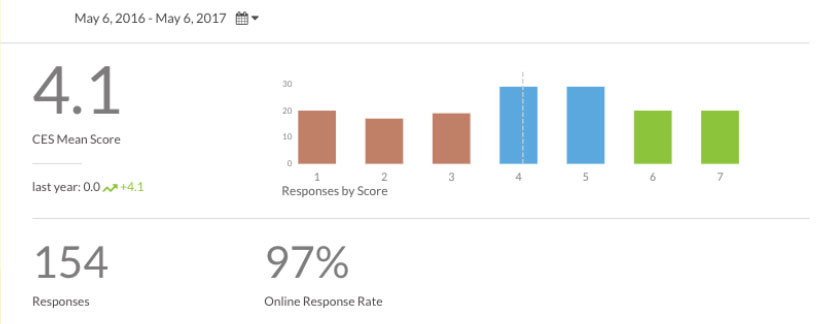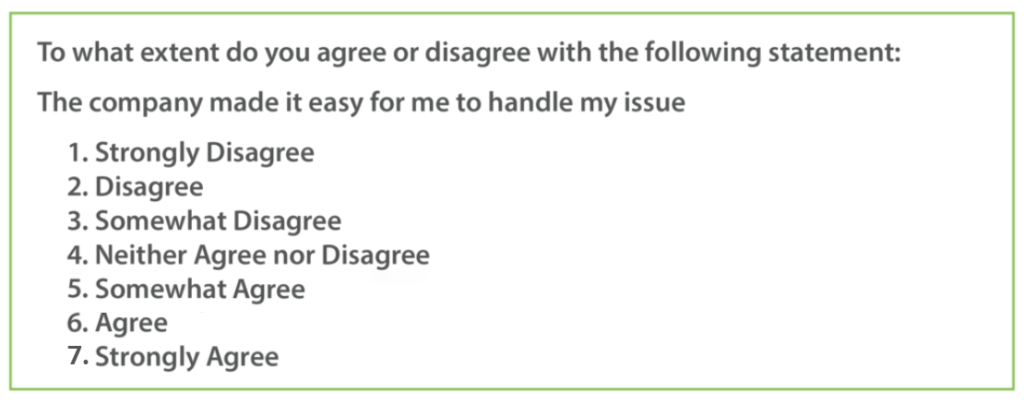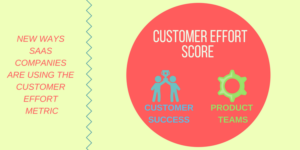The Customer Effort Score (CES) is an index from 1 to 7 that measures how easy a company makes it for customers to deal with its products and services. A company that provides effortless service gets a 7 while a company that makes it difficult gets a 1. In other words, the higher the CES, the better.
Calculate CES by averaging all of the individual responses submitted through a Customer Effort Score survey question.

CES Snapshot Dashboard Source: InMoment
The scoring and calculation of the CES metric has an interesting history. When the Corporate Executive Board (CEB) first released the CES survey method around 2008, the original wording of the question was as follows:

Notice that with this scale and wording of the question, a low score is a good score, while a high score is a bad score. This may create confusion for customer experience professionals accustomed to NPS and CSAT metrics where high scores are good. Researchers also found that the word “effort” had different cultural meanings when translated in different languages.
In 2013, after years of experimenting, advising clients, compiling responses and correlating them with customer loyalty, the CEB came up with revised language, on a 1 to 7 point scale, that they found to be more predictive of customer loyalty. They renamed the survey question CES 2.0.

InMoment’s default CES question template takes a similar approach and can be customised to fit your needs:


See ROI in Half the Time
InMoment’s integrated CX approach increases customer lifetime value and bottom line performance in just 12 months, significantly faster than the industry average of 25 months!



